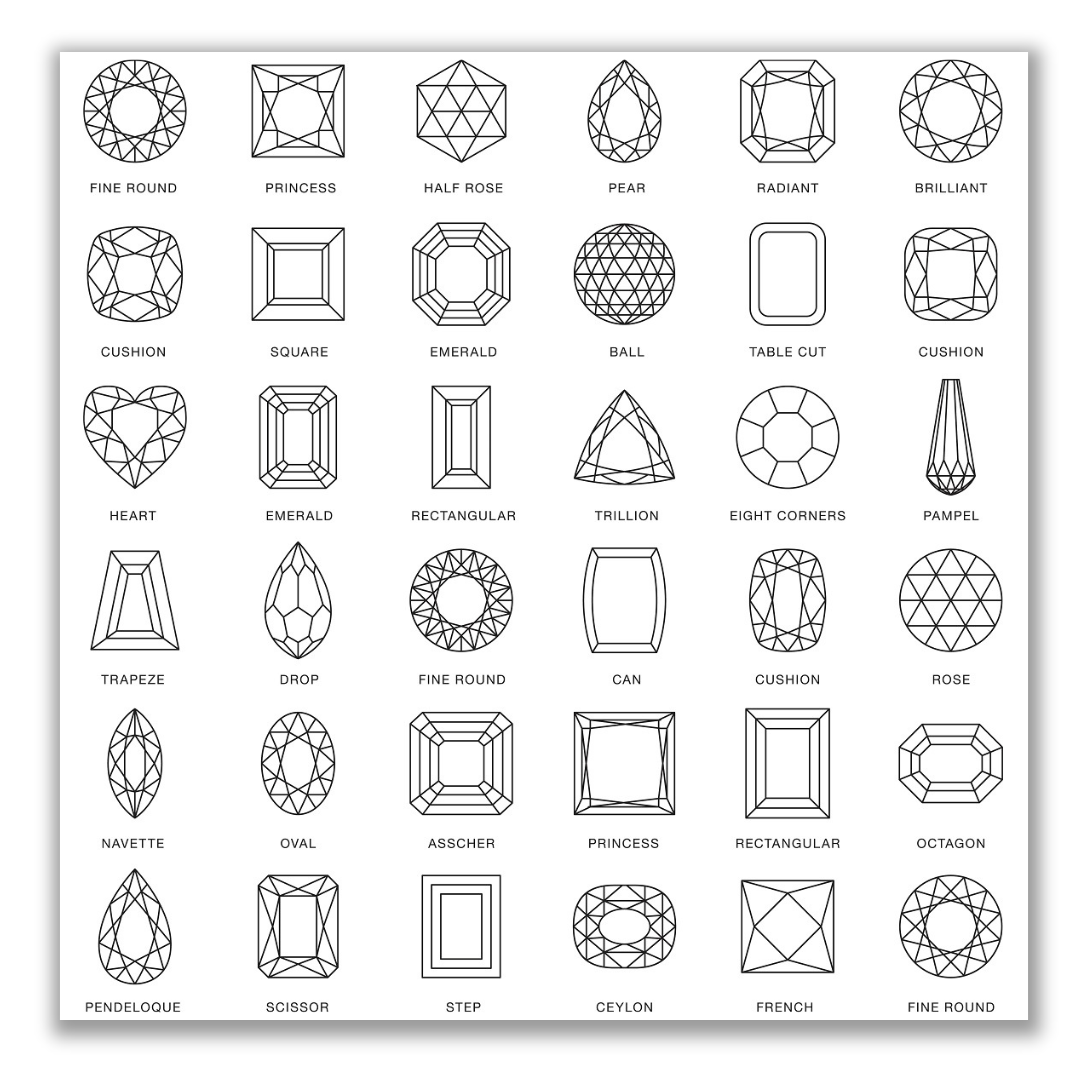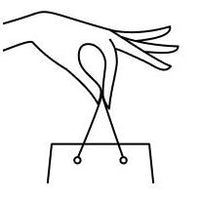Classic Gemstone Cuts
Gemstone cuts play a crucial role in enhancing the beauty and brilliance of precious gemstones, turning them into captivating works of art. Classic gemstone cuts are timeless and have been perfected over centuries to showcase a gemstone's inherent properties, such as color, clarity, and brilliance, to their fullest potential. Below is a detailed description of some of the most popular classic gemstone cuts:
Round Brilliant Cut:
The Round Brilliant Cut is one of the most popular and well-known diamond cuts, renowned for its exceptional brilliance and fire. It is the most traditional and classic of all diamond shapes, representing approximately 75% of all diamond sales worldwide. The round brilliant cut is specifically designed to maximize the diamond's sparkle and brilliance, making it a timeless and highly sought-after choice for engagement rings and other fine jewelry pieces.

Russian Demantoid Diamond 18 Karat Gold Cocktail Ring by 1stdibs
Key features of the Round Brilliant Cut:
-
Facet Arrangement: The round brilliant cut consists of a specific arrangement of facets that interact with light in a way that creates optimal brilliance and scintillation. It typically has 57 to 58 facets, including a large table facet on the top and a culet at the bottom.
-
Symmetry: Precision is critical in achieving the desired brilliance of a round brilliant cut diamond. The symmetry of the facets ensures that light is reflected and refracted evenly throughout the stone, resulting in its signature sparkle.
-
Proportions: The proportions of a round brilliant cut diamond play a significant role in its brilliance. An ideal round brilliant cut diamond should have a depth and table percentage that allow for maximum light performance. The ideal depth percentage is generally around 59% to 62%, while the table percentage should be between 53% and 57%.
-
Girdle: The girdle is the outer edge of the diamond, and in round brilliant cuts, it is often faceted or polished. A medium to slightly thick girdle is common for a well-cut diamond as it helps protect the stone and maintain its structural integrity.
-
Culet: The culet is the small facet at the bottom of the diamond, and in well-cut round brilliants, it is usually very small or even absent. This ensures that light is not lost through the bottom of the stone.
-
Brilliance and Fire: The round brilliant cut's brilliance is its ability to reflect white light both internally and externally, giving the diamond a dazzling sparkle. Fire, on the other hand, refers to the dispersion of colored light, resulting in flashes of spectral colors, particularly when the diamond is viewed in various lighting conditions.
-
Popularity: The round brilliant cut's timeless appeal and versatility have made it the most popular choice for engagement rings and other fine jewelry pieces. Its classic shape complements various ring settings and styles, making it a universally admired choice.
When choosing a round brilliant cut diamond, it is essential to consider the 4Cs (Carat, Color, Clarity, and Cut) to find the perfect balance between size, color, clarity, and brilliance to suit your preferences and budget. A well-cut round brilliant diamond will captivate the eye with its brilliance and become a cherished symbol of love and commitment.

princess cut:
The Princess Cut is a popular and elegant diamond shape used primarily in engagement rings and other fine jewelry. It is one of the most sought-after diamond cuts due to its brilliance, sparkle, and contemporary appearance. The cut was first introduced in the 1960s, and since then, it has become one of the top choices for those looking for a modern yet classic diamond shape.
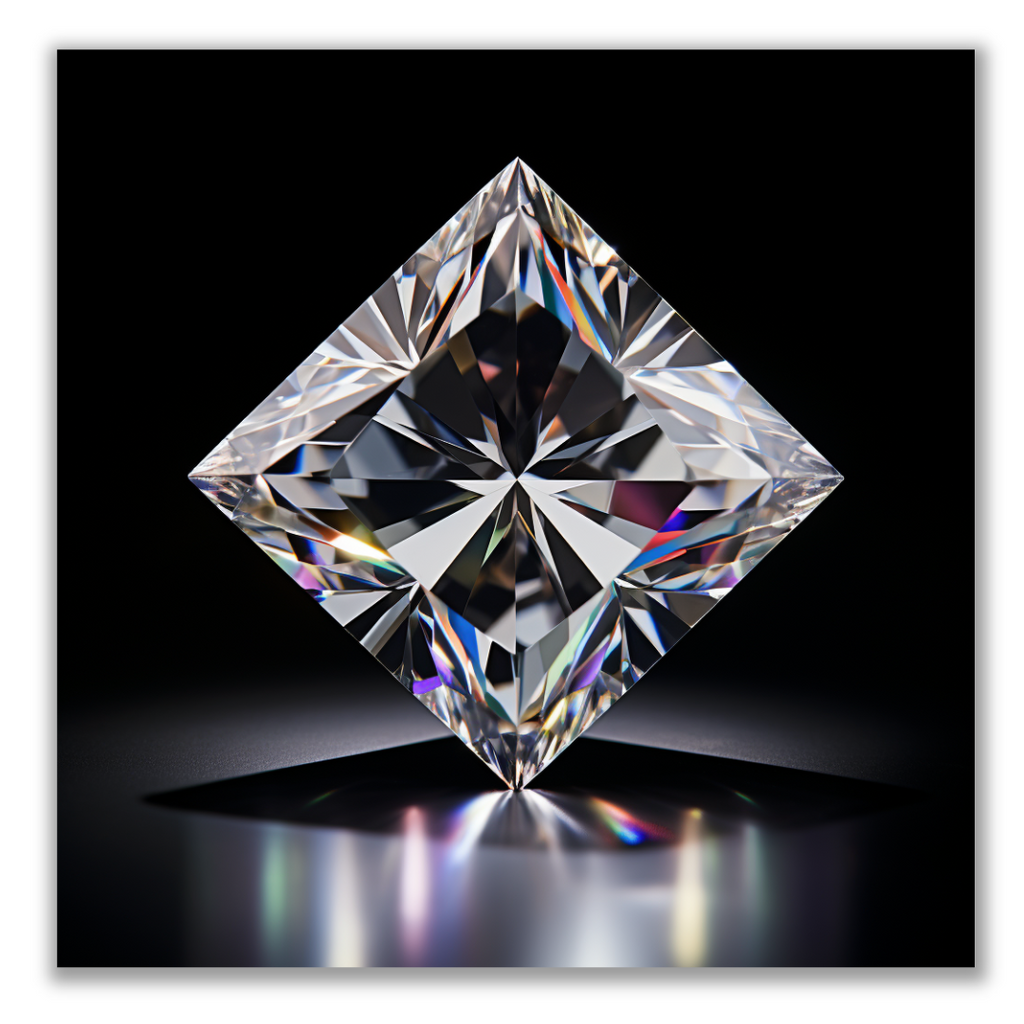
Characteristics:
-
Shape: The Princess Cut is a square or rectangular shape with pointed corners, resembling an inverted pyramid. It is often referred to as a "square modified brilliant" because it combines the brilliant cutting style with a square or rectangular shape.
-
Facets: A Princess Cut diamond typically has 58 facets. These facets are carefully arranged to maximize the stone's brilliance, fire, and scintillation. The brilliant-cut facets help the diamond reflect light beautifully and create a stunning display of flashes and sparkles when it moves.
-
Sparkle: The cut's unique faceting and arrangement allow it to disperse light exceptionally well, resulting in a brilliant sparkle. When well-cut, a Princess Cut diamond can exhibit a spectacular play of light, making it eye-catching and captivating.
-
Versatility: The Princess Cut is versatile, as it suits various engagement ring settings and styles. It complements both modern and vintage designs, making it a timeless choice that fits various personal preferences and tastes.
-
Size Appearance: The Princess Cut tends to look slightly larger than other diamond shapes of the same carat weight. This is because its square or rectangular outline maximizes the visible surface area of the diamond.
-
Corners: The pointed corners of the Princess Cut can be vulnerable to chipping or damage. To protect the corners, some Princess Cut diamonds have additional facets, known as "chevron" or "French" corners, which add extra brilliance and enhance durability.
Choosing a Princess Cut Diamond:
When selecting a Princess Cut diamond, it's essential to consider the 4 Cs: Cut, Color, Clarity, and Carat weight.
-
Cut: The cut quality is crucial to the diamond's overall beauty and sparkle. Look for a Princess Cut with excellent or very good cut grades, ensuring it has been crafted to maximize brilliance and light performance.
-
Color: Princess Cut diamonds tend to show color more prominently than some other shapes. Opt for a diamond with a color grade that is near colorless (e.g., G, H) or faintly colored (e.g., I, J) to maintain a bright appearance.
-
Clarity: For the best value, choose a diamond with a clarity grade of SI1 (slightly included) or SI2 (slightly included). These diamonds have minor inclusions that are often not visible to the naked eye.
-
Carat: Choose a carat weight that fits your preferences and budget. Remember that the Princess Cut's shape allows it to appear larger than other diamond shapes of the same weight.

Emerald Cut:

The Emerald Cut is a classic and sophisticated diamond shape known for its clean lines, elegance, and understated beauty. While it is commonly used for diamonds, it can also be found in other gemstones like emeralds (hence the name) and sapphires. The cut is characterized by its rectangular shape with cropped corners, which creates a step-cut faceting pattern. This cut emphasizes clarity and showcases the stone's natural luster and color.
Characteristics:
-
Shape: The Emerald Cut is rectangular with straight, beveled edges and truncated corners. Its elongated shape gives it a regal and refined appearance. The length-to-width ratio of an Emerald Cut can vary, allowing for customization based on personal preferences.
-
Facets: Unlike brilliant cuts that feature triangular and kite-shaped facets, the Emerald Cut has step-like, elongated facets running parallel to the stone's edges. These "step cuts" create a hall-of-mirrors effect, giving the diamond a distinct and elegant look.
-
Clarity: The step-cut facets make inclusions and imperfections more visible compared to brilliant cuts. As a result, it's essential to prioritize clarity when selecting an Emerald Cut diamond. Diamonds with higher clarity grades, such as VVS (Very, Very Slightly Included) or VS (Very Slightly Included), are preferred to ensure the stone's beauty and brilliance.
-
Transparency: The Emerald Cut's large, open table and step-cut facets showcase the diamond's transparency and color. This makes it an excellent choice for high-quality diamonds with impressive color grades, as their true hues are more apparent in this cut.
-
Versatility: The Emerald Cut is a versatile shape that complements various engagement ring styles, from classic and vintage designs to modern and contemporary settings. It also pairs well with different side stones and band styles, making it a popular choice for those seeking a timeless and sophisticated look.
-
Carat Weight: The rectangular shape of the Emerald Cut can make the diamond appear larger than a round brilliant of the same carat weight. This allows individuals to choose slightly smaller carat weights without sacrificing the visual impact.
Choosing an Emerald Cut Diamond:
When shopping for an Emerald Cut diamond, consider the following factors:
-
Cut: Aim for a well-proportioned Emerald Cut with balanced step-cut facets. The quality of the cut directly impacts the diamond's brilliance and overall appearance.
-
Clarity: Look for a diamond with a clarity grade that ensures any inclusions or imperfections are not easily visible to the naked eye. A clarity grade of VS2 (Very Slightly Included) or higher is recommended.
-
Color: Choose a color grade that suits your preferences. Diamonds within the color range of G to J tend to be popular choices as they offer an excellent balance of whiteness and value.
-
Length-to-Width Ratio: Determine the preferred length-to-width ratio based on personal aesthetics. Some prefer a more elongated shape (e.g., 1.5:1), while others may prefer a squarer appearance (e.g., 1.2:1).

Oval Cut:
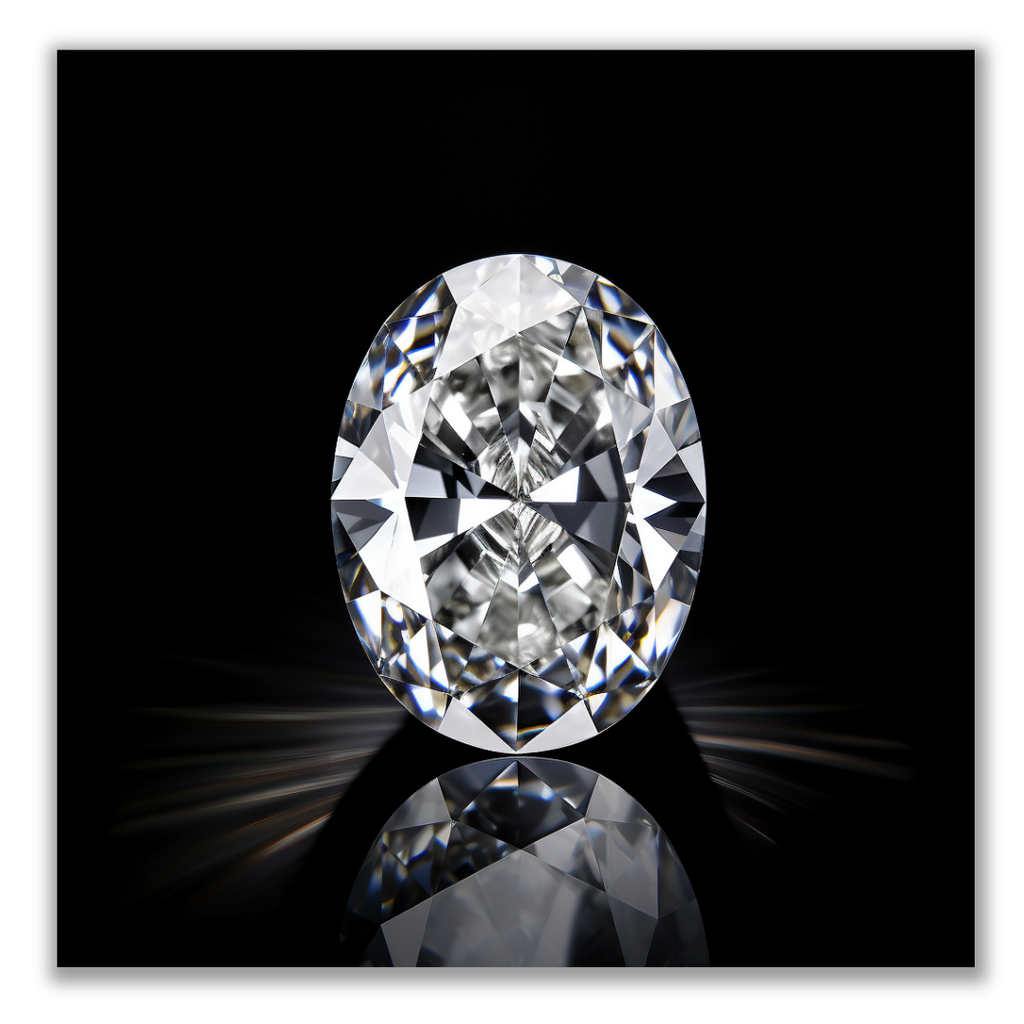
The Oval Cut is a brilliant diamond shape known for its elegance, versatility, and ability to create the illusion of elongated fingers when worn as an engagement ring. As one of the most popular diamond shapes, the oval cut offers a timeless and flattering look that appeals to a wide range of preferences and styles.
Characteristics:
-
Shape: The Oval Cut is an elongated and symmetrical diamond shape with gently rounded ends. It is essentially an elongated version of the round brilliant cut and shares many of its brilliant-cut features, such as multiple facets designed to maximize the diamond's sparkle and fire.
-
Facets: The Oval Cut typically has 58 facets, just like the round brilliant cut. The arrangement of these facets allows the diamond to reflect light beautifully, resulting in exceptional brilliance and sparkle.
-
Length-to-Width Ratio: The length-to-width ratio of an oval diamond can vary, giving you the flexibility to choose the appearance that best suits your preferences. For example, a higher ratio creates a more elongated oval, while a lower ratio results in a rounder appearance.
-
Brilliance: The oval shape's brilliant-cut style maximizes the diamond's light performance, giving it a dazzling sparkle. When well-cut, an oval diamond can exhibit a beautiful play of light, with a fiery and scintillating appearance.
-
Versatility: The elongated shape of the Oval Cut complements various engagement ring settings and styles. It looks stunning as a solitaire, in a halo setting, or accented with side stones, making it a versatile choice for different designs.
-
Finger Illusion: Due to its elongated shape, an oval diamond can create the illusion of longer and more slender fingers when worn on the hand. This quality makes it a popular choice for those who want a flattering and elegant look.
Choosing an Oval Cut Diamond:
When selecting an Oval Cut diamond, consider the following factors:
-
Cut: Look for a well-cut oval diamond with symmetrical and even proportions. A properly cut oval diamond will have excellent light performance and a balanced appearance.
-
Bow-Tie Effect: Be mindful of the bow-tie effect, a dark area resembling a bow tie, which can appear in the center of some oval diamonds due to the way light interacts with the stone. Choose an oval diamond with minimal or no bow-tie effect for the best overall appearance.
-
Length-to-Width Ratio: Choose the length-to-width ratio that appeals to you most. This is a matter of personal preference, as some people prefer a more elongated look, while others may prefer a more rounded appearance.
-
Clarity and Color: Opt for a clarity grade and color grade that suits your preferences and budget. For a balance of quality and value, consider diamonds with clarity grades of VS2 or SI1 and color grades in the near-colorless range (G to J).

Pear (Teardrop) Cut:
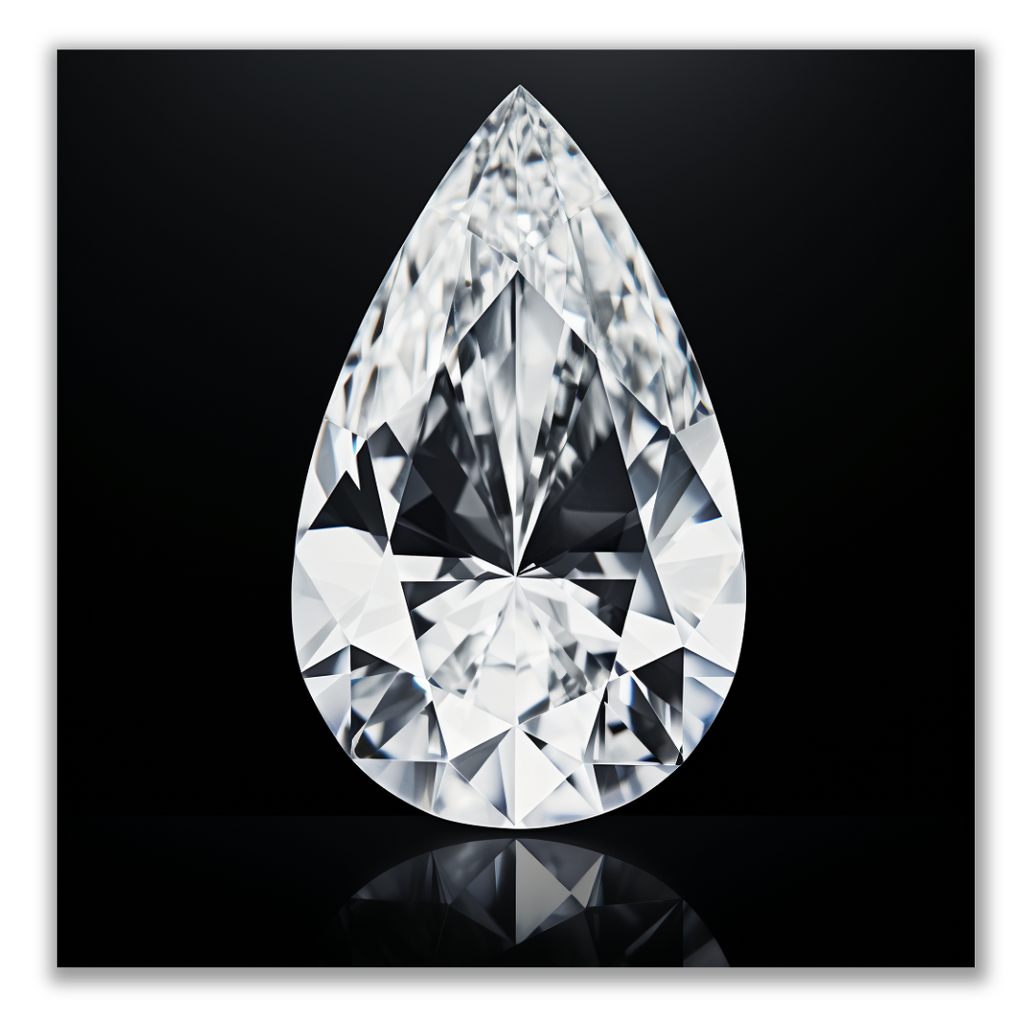
The Pear Cut, also known as the Teardrop Cut, is a stunning and unique diamond shape that combines the best features of both the Round Brilliant and Marquise cuts. Its elegant silhouette resembles a sparkling teardrop, making it a popular choice for engagement rings and other exquisite jewelry pieces.
Characteristics:
-
Shape: The Pear Cut is a hybrid shape with a rounded end and a single point at the other end, resembling a teardrop or a pear fruit. The shape is achieved by combining the curves of a round brilliant cut with the elongated form of a marquise cut.
-
Facets: A well-cut Pear diamond typically has 58 to 71 facets, with a prominent brilliant-cut style on the rounded end and step-cut facets on the pointed end. This combination of facets allows the diamond to exhibit both fire and sparkle.
-
Symmetry: Symmetry is crucial in the Pear Cut because it affects the diamond's overall beauty and proportion. Ideally, the two sides of the diamond should mirror each other precisely.
-
Length-to-Width Ratio: The length-to-width ratio determines the appearance of the Pear Cut diamond. A higher ratio creates a more elongated and slender teardrop shape, while a lower ratio results in a rounder, fuller teardrop.
-
Setting Options: The Pear Cut is incredibly versatile and complements various engagement ring settings, including solitaires, halos, three-stone designs, and even as side stones in elaborate settings. It also looks stunning when used in pendants and earrings.
-
Finger Illusion: Similar to the Oval Cut, the Pear Cut can create the illusion of elongated fingers when worn as an engagement ring, making it a flattering and elegant choice.
Choosing a Pear Cut Diamond:
When shopping for a Pear Cut diamond, consider the following factors:
-
Symmetry: Choose a diamond with excellent symmetry to ensure that both halves of the Pear are precisely aligned. Symmetry greatly impacts the diamond's appearance and sparkle.
-
Cut Quality: Opt for a well-cut Pear diamond with balanced and even proportions. A good cut ensures that the diamond reflects light optimally and displays its brilliance.
-
Bow-Tie Effect: Pay attention to the bow-tie effect, a dark area that may appear in the center of some Pear diamonds. Ideally, select a diamond with minimal or no bow-tie effect.
-
Length-to-Width Ratio: Choose the length-to-width ratio that best suits your preferences and style. Consider the finger illusion effect and pick a ratio that flatters your hand.
-
Setting: Select a setting that protects the pointed end of the diamond, as this part can be more susceptible to damage.

Marquise Cut:
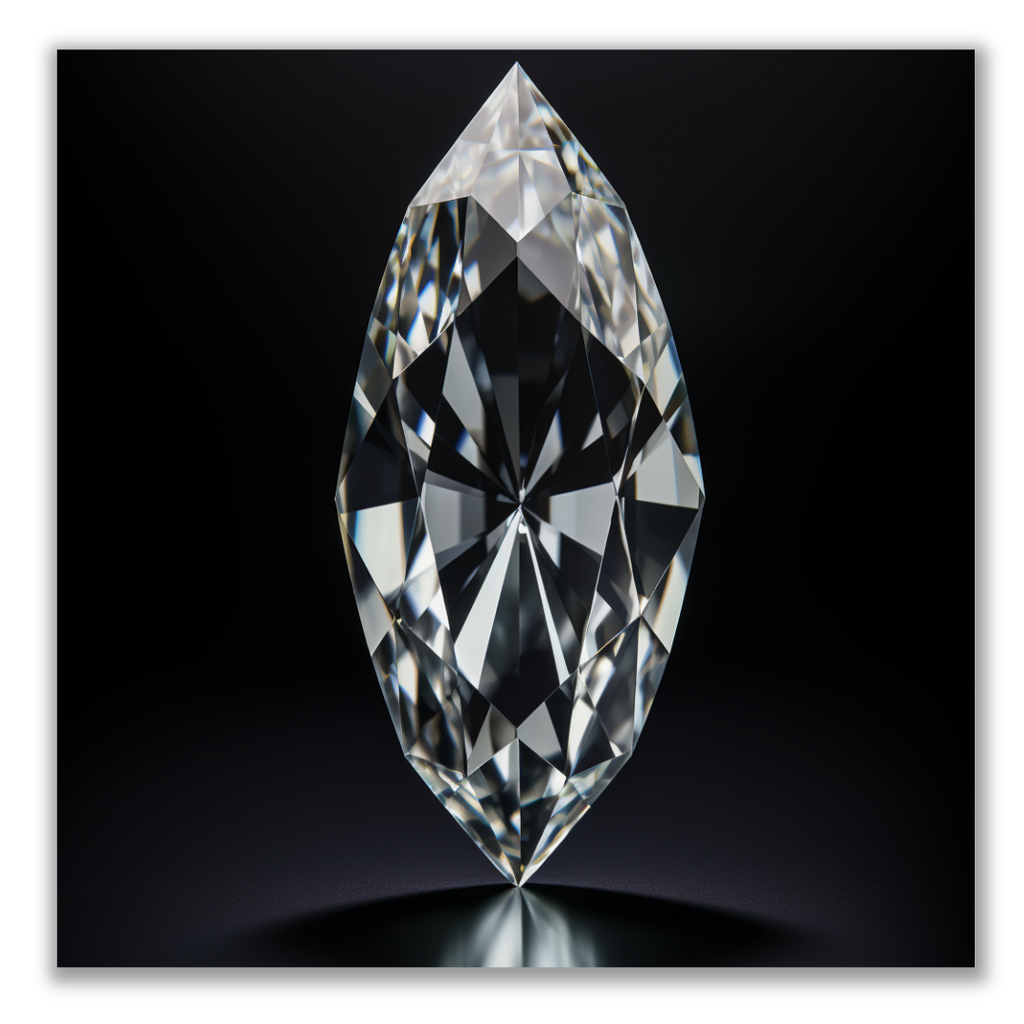
The Marquise Cut is a beautiful and distinctive diamond shape known for its elongated, boat-like silhouette with pointed ends. It is one of the most unique and elegant cuts, often chosen for engagement rings and other fine jewelry due to its striking appearance and ability to create the illusion of longer, slender fingers.
Characteristics:
-
Shape: The Marquise Cut features an elongated shape with pointed ends, resembling the hull of a boat. The cut has a symmetrical design, with two sets of facets on either side, mirroring each other.
-
Facets: A well-cut Marquise diamond typically has 56 facets, with a combination of step-cut facets along the sides and brilliant-cut facets on the top and bottom. This arrangement maximizes the diamond's brilliance and fire.
-
Length-to-Width Ratio: The length-to-width ratio of the Marquise Cut can vary, allowing for customization based on personal preferences. A higher ratio creates a more elongated and slender look, while a lower ratio results in a fuller appearance.
-
Finger Illusion: The elongated shape of the Marquise Cut diamond creates the illusion of longer and more slender fingers when worn on the hand. This quality makes it a popular choice for those who want to enhance the visual impact of their engagement ring.
-
Versatility: The Marquise Cut complements various engagement ring settings and styles, making it a versatile choice for different designs. It pairs beautifully with other diamond shapes and side stones, adding a touch of sophistication to any ring setting.
-
Carat Weight: The elongated shape of the Marquise Cut can make the diamond appear larger than other shapes of the same carat weight. This allows individuals to choose slightly smaller carat weights without sacrificing visual impact.
Choosing a Marquise Cut Diamond:
When selecting a Marquise Cut diamond, consider the following factors:
-
Symmetry: Symmetry is crucial in the Marquise Cut to ensure that both halves of the diamond are precisely aligned. Look for a diamond with excellent symmetry to ensure its balanced appearance.
-
Bow-Tie Effect: Be mindful of the bow-tie effect, a dark area that may appear in the center of some Marquise diamonds due to the way light interacts with the stone. Choose a diamond with minimal or no bow-tie effect for the best overall appearance.
-
Cut Quality: Opt for a well-cut Marquise diamond with balanced proportions and consistent faceting. A good cut maximizes the diamond's brilliance and sparkle.
-
Length-to-Width Ratio: Choose the length-to-width ratio that best suits your preferences and style. Consider how it complements your hand and finger shape.
-
Prong Setting: Consider a prong setting that protects the pointed ends of the Marquise Cut diamond, as they can be more susceptible to chipping or damage.

Asscher Cut:
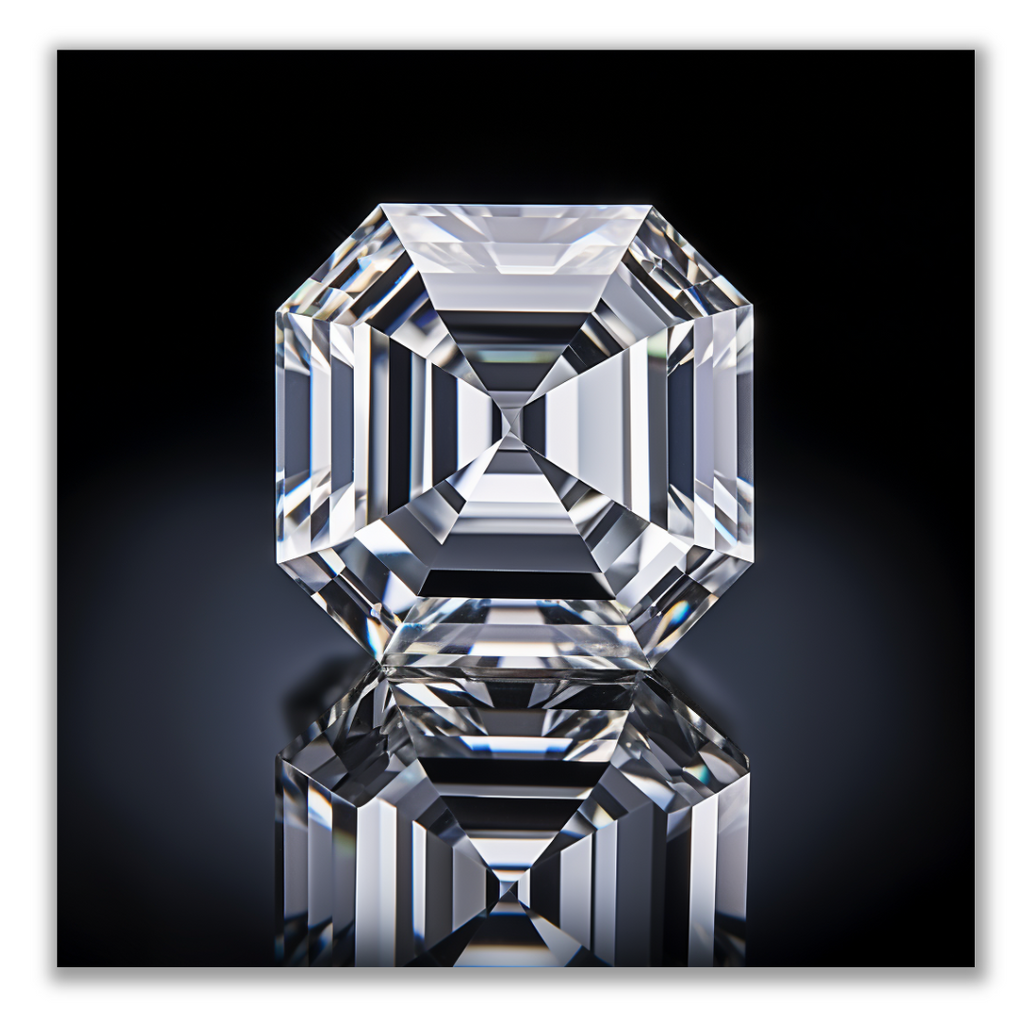
The Asscher Cut is a stunning and sophisticated diamond shape that exudes timeless elegance and vintage charm. Developed in the early 20th century by the Asscher Brothers of Holland, this cut is often associated with the Art Deco era and is renowned for its unique and mesmerizing appearance.
Characteristics:
-
Shape: The Asscher Cut is a square or slightly rectangular shape with deeply trimmed corners, giving it a somewhat octagonal appearance. It is step-cut, similar to the emerald cut, with large, open facets that create a hall-of-mirrors effect.
-
Facets: Typically, the Asscher Cut diamond has 58 facets, including large step facets on the crown and smaller step facets on the pavilion. These facets create a distinctive optical pattern and exceptional brilliance.
-
Clarity: Due to its large, open facets, the Asscher Cut tends to highlight the diamond's clarity more prominently. When choosing an Asscher Cut diamond, it is essential to prioritize clarity and select a stone with minimal inclusions or imperfections.
-
Symmetry: The Asscher Cut requires precise and careful craftsmanship to achieve perfect symmetry. The alignment of the facets and the overall symmetry greatly impacts the diamond's beauty and visual appeal.
-
Vintage Appeal: The Asscher Cut's origins in the Art Deco era give it a vintage charm and appeal. It harkens back to a bygone era of glamour and sophistication, making it an ideal choice for those who appreciate vintage-inspired jewelry.
-
Versatility: While the Asscher Cut is often seen in classic and vintage-style engagement rings, it can also complement modern and contemporary settings. Its versatility allows it to pair well with various metal types and accent stones.
Choosing an Asscher Cut Diamond:
When shopping for an Asscher Cut diamond, consider the following factors:
-
Cut Quality: Look for a well-cut Asscher diamond with excellent symmetry and balanced proportions. A high-quality cut ensures the diamond reflects light beautifully and showcases its brilliance.
-
Clarity: Due to the open facets, choose a diamond with a higher clarity grade, such as VS (Very Slightly Included) or higher, to ensure any inclusions are not easily visible to the naked eye.
-
Color: Consider the color grade that best suits your preferences and budget. Diamonds in the near-colorless range (G to J) are often popular choices, as they offer an excellent balance of whiteness and value.
-
Setting: Choose a setting that protects the corners of the Asscher Cut diamond, as these areas can be more vulnerable to chipping. A secure prong or bezel setting is recommended.







